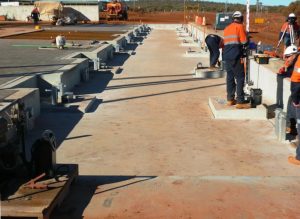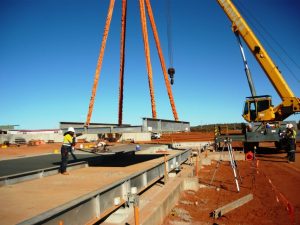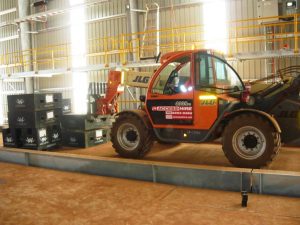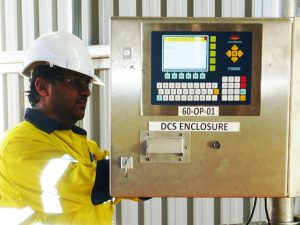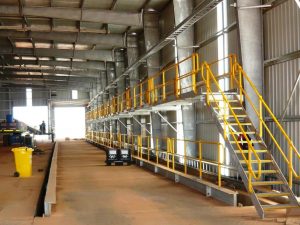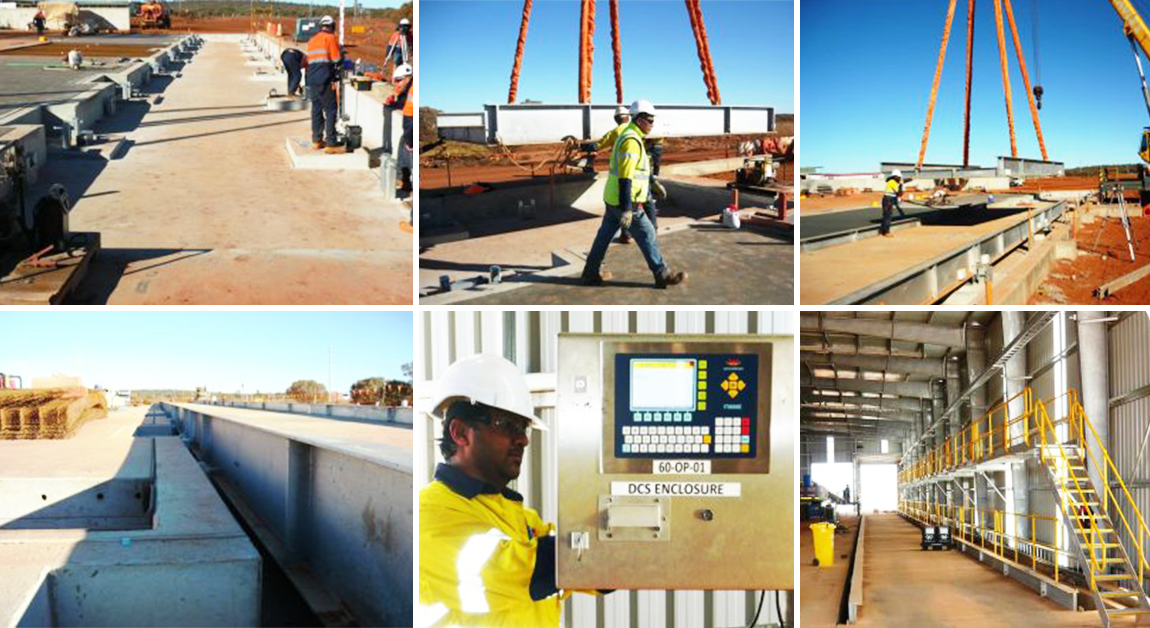
Multi-deck weighbridges are designed to measure individual axle group weight readings during a single vehicle weighing transaction. While it is possible to collate axle group weights using other weighing processes such as axle scales, in-motion axle weighbridges or even split weighing a vehicle; all of these are more labour intensive and prone to inaccuracy due to a multitude of external factors.
The majority of overloading fines are not issued for vehicles exceeding their gross vehicle mass (GVM), but for axle groups exceeding their allowable legal weights. Multi-deck weighbridges can immediately provide accurate axle group weights with many having functionality to visibly highlight overloaded axle groups to both the weighbridge operator and to the driver. For added security when overloading is identified, most weighbridge systems can over-ride access to printed weight tickets to help prevent the vehicle from proceeding onto public roads.
The multi-deck weighbridge pictured below uses a semi-pit foundation and shows load cell mountings and end-to-end movement stops installed. Semi-pit weighbridges have the foundations mounted in a shallow pit with the deck at ground level to minimise land usage while also providing easy vehicle access.
Concrete deck weighbridges are better suited for heavy duty weighing applications than steel deck weighbridges due to the immense strength that the reinforced concrete adds to the weighbridge’s structural integrity. This prevents the steelwork from flexing under heavy loads, as is often the case when inferior quality imported steel deck weighbridges are used.
The heavy concrete deck sections are poured on site and carefully lifted into position by a crane. See image below. All steelwork is fully hot dip galvanised for superior corrosion resistance to ensure an extended working life when used in industrial or external environments.
The end-to-end stops (pictured below) prevent excess deck movements under heavy braking and acceleration of vehicles while entering or leaving the weighbridge. Excessive deck movements can cause premature wear of the load cells and load cell cups with the stops usually requiring seasonal adjustments to maintain the required clearances.
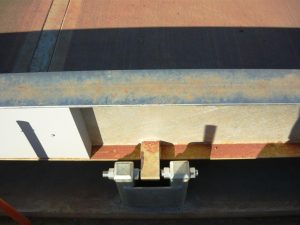
This side of the multi-deck weighbridge is positioned next to what will be the building side wall when it is erected. See image below. Access clearance for cleaning and servicing is provided by the open pit design which will be covered by safety grates for its entire length once the installation is completed.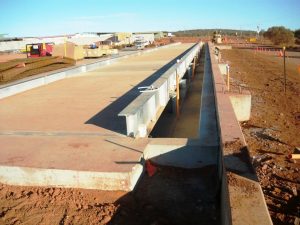
Access to the load cells from the working side of the weighbridge is obtained through cut-outs in the foundations, which are then covered by heavily reinforced metal hatches to allow the end-loaders to freely access this side of the weighbridge while filling product into vehicles positioned on the weighbridge decks. See image below.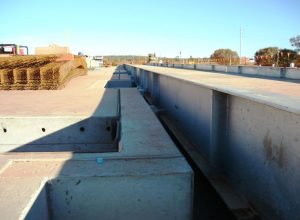
A heavy capacity forklift, or most usually a weighbridge test truck with weights onboard, is used to place the certified test masses used to calibrate each of the eight weighbridge decks prior to certification for Trade Use. See image below.
A driver control station (DCS) is installed. See image below. The weights from each of the eight weighbridge decks are also summed by the DCS to provide Legal for Trade weighing tickets. This fully programmable weighing terminal has a stainless steel housing with IP65 waterproof rating for use in industrial environments. For this application, the DCS is configured for use as an unattended weighbridge terminal.
The image below shows the nearly completed installation of the 52 metre long multi-deck weighbridge showing safety railings, inspection walkway, and access steps. Vehicles enter the building and drive straight onto the weighbridge where they are accurately filled with copper concentrate by large end-loaders.
To discover how the weighing experts at Diverseco can install a bespoke weighbridge solution for your site, contact us to speak with one of our specialists – alternatively please visit our Weighbridges page to find out more!

